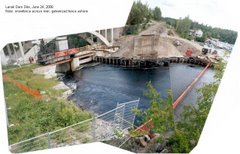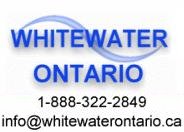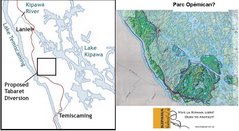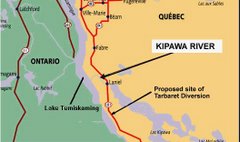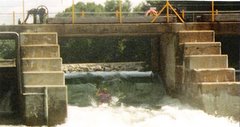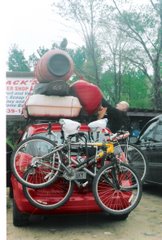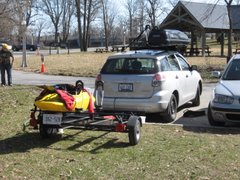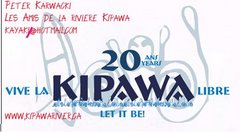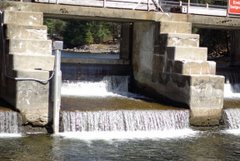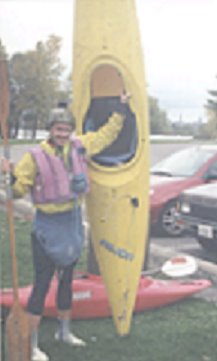
IMPORTANT NOTICE
Harper Government
Wants to De-Water the Navigable Waters Protection Act
While locked in a legal struggle over navigation rights with a grassroots river
advocacy group, the federal government is attempting an end-run on that legal
case by proposing changes to the Navigable Waters Protection Act that would
render this historic act completely irrelevant.
As the minutes of the March 11, 2008 meeting of the parliamentary Standing
Committee on Transport, Infrastructure and Communities, clearly show that the
Government of Canada wants to change the NWPA to make it easier to put
dams, bridges and other structures on Canadian Rivers without giving any
consideration to the environmental impact of loss of navigation.
What this mans is that the people who navigate rivers in this country will no
longer have a say in accessing the environmental impacts of development.
WHAT THEY WANT TO CHANGE?
The Canadian Government wants to remove the following from the Navigable
Waters Protection Act:
- minor waters
- minor works
- dams, bridges, causeways and booms
These proposed changes to the NWPA will gut this historic legislation, erase our
heritage right of navigation, and will have a serious impact on the environment
in Canada.
WHAT DOES “MINOR WATERS” MEAN?
Here’s how Shirley Anne Scharf of Infrastructure Canada answered that
question for the parliamentary committee March 11: “The way it (the NWPA) is
constructed right now—and I believe David Osbaldeston made this point—minor
waters are such that I believe if you float a canoe in a body of water it is
considered a navigable water. From that point of view, streamlining the act
and excluding things of that nature would be very advantageous.”
WHAT DOES “MINOR WORKS” MEAN?
The government is not clear on that. Infrastructure Canada says minor works
would include “micro-hydroelectric projects” among other things.
Another reference says “minor work” means when a project has a minor impact
on navigation.
What this really seems to mean is that project proponents and federal
bureaucrats will decide what is a minor work and what is a minor impact. They
will decide what will be exempt from the navigation protection provisions of the
NWPA. And that is very scary.
DAMS BRIDGES CAUSEWAYS AND BOOMS?
Eliminating these “four named works” from the NWPA would gut the Act and
render it irrelevant.
These are the projects that have the greatest impact on navigation. That is why
they are specifically named in the act in the first place.
WHY DOES THE FEDERAL GOVERNMENT WANT TO SCRAP THESE
ENVIRONMENTAL SAFEGUARDS IN THE NWPA?
We don’t know. It makes no sense. At a time when Canadian Rivers are under
serious threat from all directions, we don’t know why the federal government
wants to make matters worse in orders of magnitude.
When we protect navigation rights, we protect rivers.
Les Amis de la Rivière Kipawa — Canadian Rivers
www.kipawariver.ca — www.canadianrivers.net


